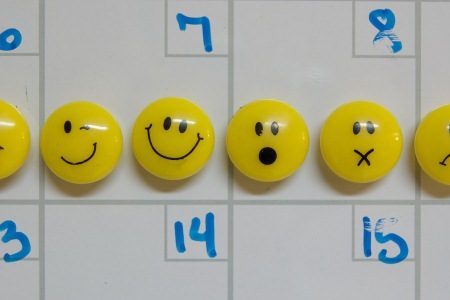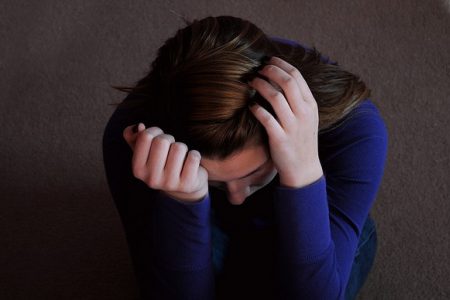More than a mood disorder: A closer look at motor symptoms in depression
Globally, around 280 million people are affected by depression. This disorder is mostly known for its affective symptoms, like deep sadness, feelings of hopelessness, and diminished self-worth. But did you know that depression can also affect motor function?
Imagine finding yourself having difficulty buttoning up your shirt in the morning, struggling to coordinate your fingers to complete this seemingly simple task. As you walk across the room, you find yourself feeling unsteady on your feet, and your slow, rigid movements make each step feel heavy. These difficulties illustrate motor impairments that might arise as a result of major depressive disorder (hereafter referred to as depression).
People primarily associate depression with mood disturbances, but its impact extends beyond the affective domain. Depression can also result in physical symptoms, such as psychomotor retardation (a slowing down of physical movements) and psychomotor agitation (a sense of restlessness). This experience is not just anecdotal; motor symptoms are acknowledged in the DSM-5 and listed among nine possible symptoms of depression. According to DSM-5 criteria, these symptoms should occur daily and be noticeable to others. However, motor changes can sometimes be subtle and go unnoticed.
Research has shown that a variety of gross and fine motor functions can be impaired in individuals with depression. Gross motor functions refer to movements that involve large groups of muscles, such as walking or keeping balance and posture. Compared to healthy control subjects, individuals with depression have demonstrated slowed walking speed and poor balance on a backwards walking test, as well as reduced coordination on a jumping and landing test. A test measuring muscle tone showed higher rigidity of the arm muscles among individuals with depression. Additionally, depression has been found to affect the paralinguistic components of speech, resulting in elongated pauses, reduced prosody, and changes in articulation characteristics.
As for fine motor functions, these involve precise movements of small groups of muscles, such as writing or threading a needle. Manual dexterity, for example, which assesses gesture quality and duration through tasks like peg insertion or swiftly grabbing tokens, has been shown to be reduced in individuals with depression. Reduced manual dexterity can result in difficulties with manipulating and grasping objects. Additionally, steadiness and motor control, which are assessed by tasks such as inserting a pen into a hole or following a line without touching its sides, have been shown to be reduced in people with depression. These impairments affect tasks requiring coordination and precision, impacting smooth movement execution. All in all, depression impacts various gross and fine motor skills.
While motor symptoms may not be the main feature of depression, their presence in this condition underscores the importance of acknowledging that our cognitive and emotional processes cannot be separated from our body, sensations, and movements. In fact, changes in motor function have been recognized and studied in the context of many other psychiatric, neurodevelopmental, and neurodegenerative disorders, such as schizophrenia, autism spectrum disorder, and Alzheimer’s disease. In the case of depression, research suggests that motor measures can potentially differentiate between two subtypes of depression: melancholic and non-melancholic. Additionally, motor measures can potentially inform treatment selection and predict an individual’s response to a certain medication.
A deeper understanding of depression's impact on motor functioning advances research and provides valuable insights both for individuals living with depression and for the health practitioners supporting them. It can help broaden comprehension of the condition and foster a more empathetic approach to care. Practitioners can offer reassurance to patients, validating patients’ experiences as part of their condition and helping them understand motor symptoms as a manageable aspect of the illness. This understanding promotes a sense of connection and diminishes feelings of isolation as individuals progress along their path to recovery. Furthermore, with a thorough understanding of their condition, patients can educate others about these insights, raising awareness about the complexities of mental health and reducing the stigma associated with depression.
An ongoing research project at Leiden University on depression and sensorimotor functioning, led by Dr. Ruitenberg, is supported by a NARSAD Young Investigator Grant from the Brain & Behavior Research Foundation.
References
Paquet, A., Lacroix, A., Calvet, B. & Girard, M. (2022). Psychomotor Semiology in Depression: A Standardized Clinical Psychomotor Approach. BMC Psychiatry 22, 474. https://doi.org/10.1186/s12888...
Zhang, H., Li, X., Pang, J., Zhao, X., Cao, S,, Wang, X., Wang, X. & Li, H. (2020). Predicting SSRI-Resistance: Clinical Features and TagSNPs Prediction Models Based on Support Vector Machine. Frontiers in Psychiatry, 11, 493. https://doi.org/10.3389/fpsyt....
Banner photo by Toa Heftiba on Unsplash







